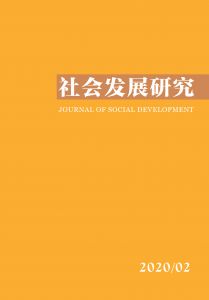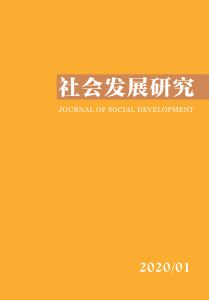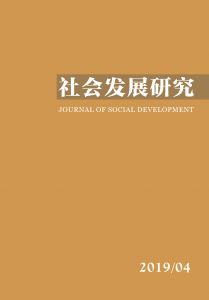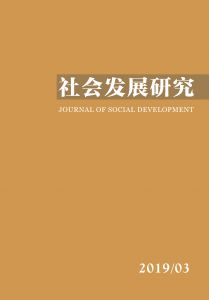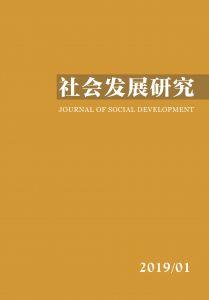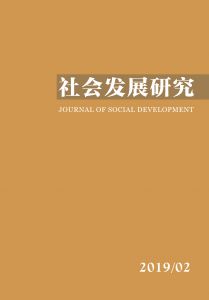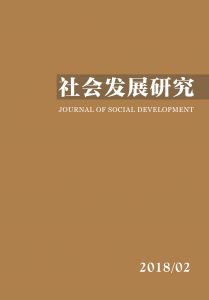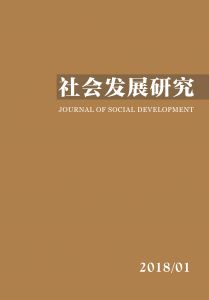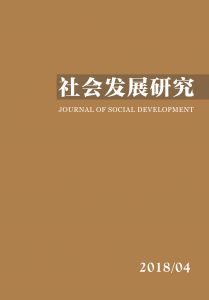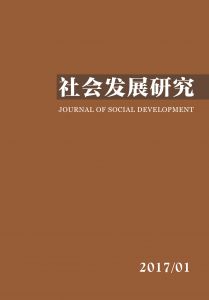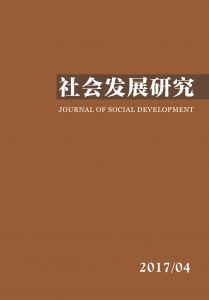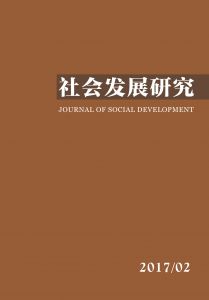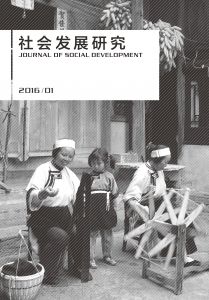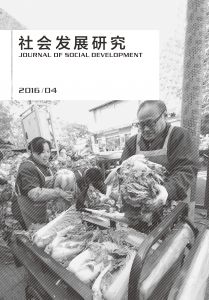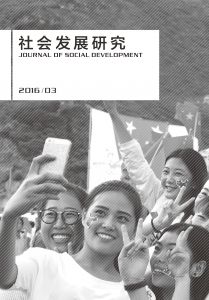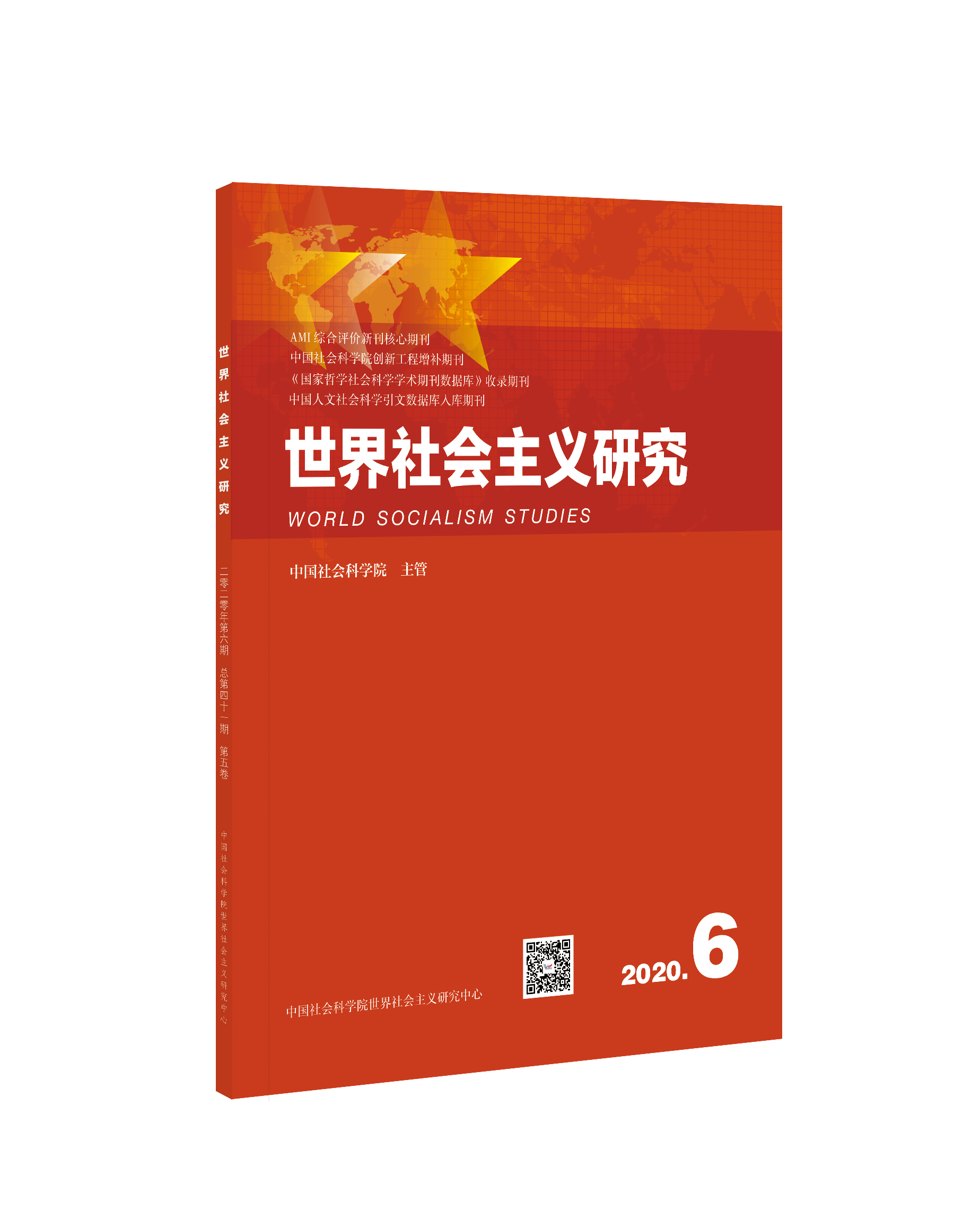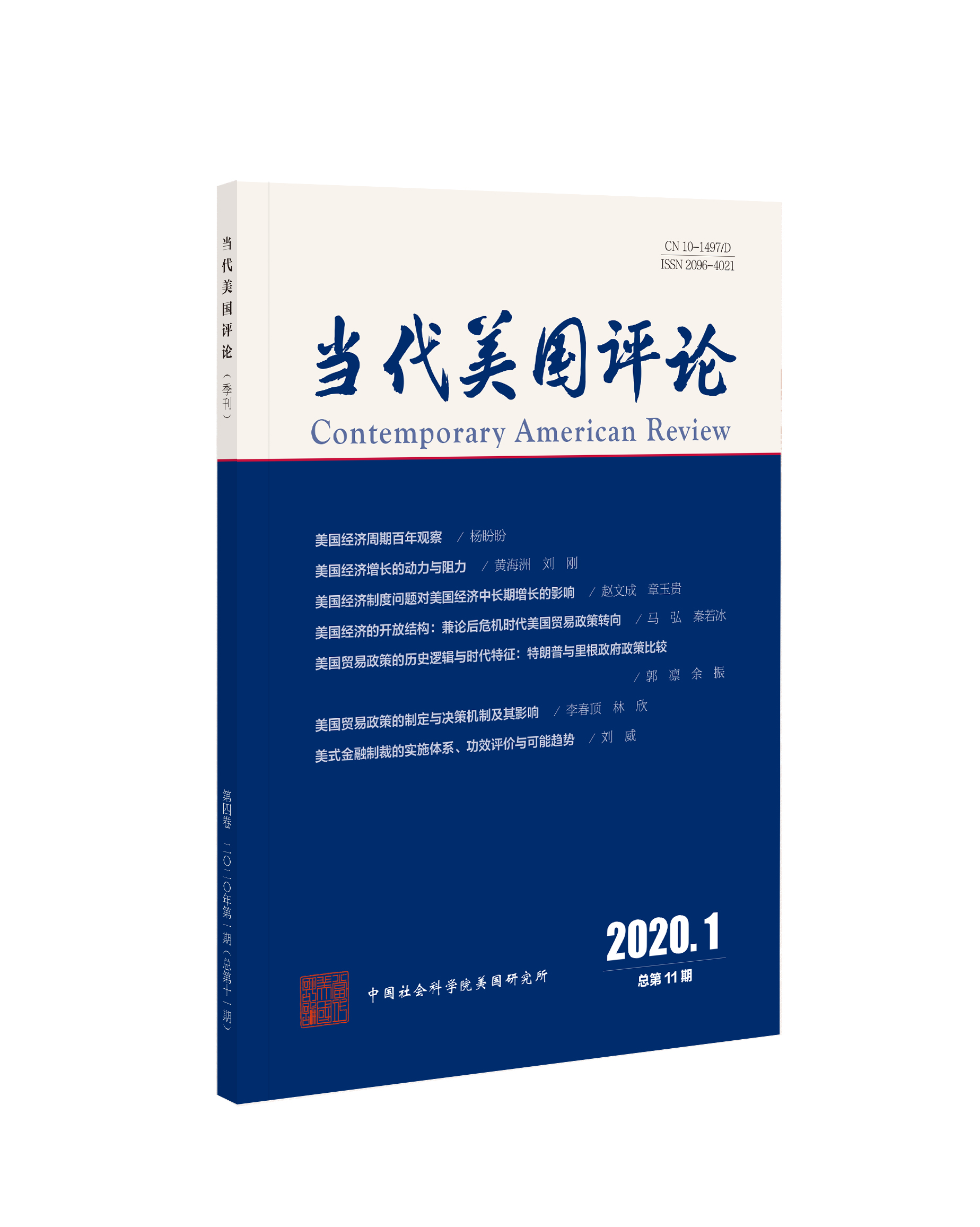最新期刊
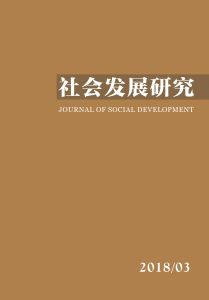
目录
过往期刊
参考文献
-
编委会
-
·特邀栏目·
-
特邀栏目:社会治理
-
“一肩挑”制度如何影响项目进村?
-
转型社区的自组织及其法治化保障
-
市场转型中国有企业与环境监管中立性
-
“村集体属于谁”与农地产权的行政建构
-
-
·论文·
-
中国人力资本转型特征与渐进式延迟退休政策:必要性、问题与对策
-
关系流动性、城市认同与居住流动意愿的关系
-
家族主义、法治环境与职业经理人
-
禁山后国家缘何上山:明代荆襄流民的治理史
-
社会关系变迁的结构化过程:基于中心—边缘结构的视角
-
-
·研究述评·
-
家庭对子女教育的代际影响效应:理论、方法与证据
-
近二十年中产阶层研究的历程:兴起、发展和转向
-
-
·调查报告·
-
中国教育扶贫:进展、经验与政策再建构
-
-
英文目录及摘要
-
稿约
-
版权页
按年份浏览:
- 全部
- 2020
- 2019
- 2018
- 2017
- 2016
- 2015
- 2014
[1][1]曹显钰、赵利淮,2004,《安徽部署村级换届选举提倡村主任书记一肩挑》,中国新闻网,11月7日(http://www.chinanews.com/news/2004/2004-11-07/26/503213.shtml)。
[2][2]陈家建,2013,《项目制与基层政府动员》,《中国社会科学》第2期。
[3][3]陈水生,2014,《项目制的执行过程与运作逻辑——对文化惠民工程的政策学考察》,《公共行政评论》第3期。
[4][4]陈涛、吴思红,2007,《村支书与村主任冲突实质:村庄派系斗争——兼论支书主任“一肩挑”的意义》,《中国农村观察》第6期。
[5][5]邓燕华,2012,《村庄合并、村委会选举与农村集体行动》,《管理世界》第7期。
[6][6]狄金华,2016,《项目制中的配套机制及其实践逻辑》,《开放时代》第5期。
[7][7]付伟、焦长权,2015,《“协调型”政权:项目制运作下的乡镇政府》,《社会学研究》第2期。
[8][8]甘庭宇,2012,《农村社会结构变动下的乡村治理机制探索——基于成都市的观察与思考》,《农村经济》第11期。
[9][9]龚为纲,2015,《项目制与粮食生产的外部性》,《开放时代》第2期。
[10][10]管兵、夏瑛,2016,《政府购买服务的制度选择及治理效果:项目制、单位制、混合制》,《管理世界》第8期。
[11][11]桂华,2014,《项目制与农村公共品供给体制分析——以农地整治为例》,《政治学研究》第4期。
[12][12]黄宗智、龚为纲、高原,2014,《“项目制”的运作机制和效果是“合理化”吗?》,《开放时代》第5期。
[13][13]江亚洲,2015,《“项目进村”过程中的非均衡利益博弈及其逻辑》,《山东行政学院学报》第3期。
[14][14]李博,2016,《项目制扶贫的运作逻辑与地方性实践——以精准扶贫视角看A县竞争性扶贫项目》,《北京社会科学》第3期。
[15][15]李祖佩,2013,《项目进村与乡村治理重构——一项基于村庄本位的考察》,《中国农村观察》第4期。
[16][16]李祖佩,2015,《项目制基层实践困境及其解释——国家自主性的视角》,《政治学研究》第5期。
[17][17]刘成良,2015,《“项目进村”实践效果差异性的乡土逻辑》,《华南农业大学学报》(社会科学版)第3期。
[18][18]刘宏明,2011,《民主政治建设视野中的农村基层组织党政合一的治理架构问题》,《山东社会科学》第12期。
[19][19]刘娜、陈会君、胡彬,2016,《湖北省村主职干部实现专职化转型》,人民网,4月13日(http://hb.people.com.cn/cpc/n2/2016/0413/c344911-28136202.html)。
[20][20]史晓晖,2010,《海口琼山区书记主任“一肩挑”5村委会直选成功》,南海网,9月25日(http://www.hinews.cn/news/system/2010/09/25/011177570.shtml)。
[21][21]彭大鹏,2011,《让基层民主有力地运转起来——对成都新村发展议事会的考察》,《华中农业大学学报》(社会科学版)第5期。
[22][22]渠敬东,2012,《项目制:一种新的国家治理体制》,《中国社会科学》第5期。
[23][23]四川省委农村工作委员会乡村治理指导处,2017,《关于中央农办乡村治理和农村社会发展工作座谈会精神的汇报》,7月25日(http://www.snsc.gov.cn/xczl/4204.htm)。
[24][24]苏鹏华,2012,《平和长乐乡村支书村主任100%“一肩挑”》,《闽南日报》,7月6日(http://www.fjsen.com/d/2012-07/06/content_8762934.htm)。
[25][25]孙新华,2016,《“项目进村”的私人化运作与村庄建设困境——基于湘中英村的经验》,《现代城市研究》第10期。
[26][26]孙秀林,2011,《华南的村治与宗族——一个功能主义的分析路径》,《社会学研究》第1期。
[27][27]唐鸣、张昆,2015,《论农村村级组织负责人党政“一肩挑”》,《当代世界社会主义问题》第1期。
[28][28]肖唐镖,2002,《宗族在村治权力分配与运行中的影响分析》,《北京行政学院学报》第3期。
[29][29]谢丽丽,2016《“项目进村”并成功运行的三种力量——以M县移民村在农业生产项目成功运行中的作用为例》,《甘肃社会科学》第1期。
[30][30]徐增阳、任宝玉,2002,《“一肩挑”真能解决“两委”冲突吗——村支部与村委会冲突的三种类型及解决思路》,《中国农村观察》第1期。
[31][31]尹利民、全文婷,2014,《项目进村、集体债务与新时期的农民负担——基于赣北D村的个案分析》,《东华理工大学学报》(社会科学版)第1期。
[32][32]应小丽,2013,《“项目进村”中村庄自主性的扩展与借力效应——基于浙江J村的考察》,《浙江社会科学》第10期。
[33][33]应小丽、钱凌燕,2015,《“项目进村”中的技术治理逻辑及困境分析》,《行政论坛》第3期。
[34][34]长子中,2007,《当前部分地区农村实行两委“一肩挑”的隐忧——以中西部五县100村为例》,《北方经济》第13期。
[35][35]折晓叶、陈婴婴,2011,《项目制的分级运作机制和治理逻辑——对“项目进村”案例的社会学分析》,《中国社会科学》第4期。
[36][36]周飞舟,2012,《财政资金的专项化及其问题兼论“项目治国”》,《社会》第1期。
[37][37]周雪光,2017,《中国国家治理的制度逻辑:一个组织学的研究》,北京:生活·读书·新知三联书店。
[38][38]周雪光、程宇,2012,《通往集体债务之路:政府组织、社会制度与乡村中国的公共产品供给》,《公共行政评论》第1期。
[39][39]Bian,Yanjie,1997,“Bringing Strong Ties Back in:Indirect Ties,Network Bridges,and Job Searches in China.” American Sociological Review 62(3).
[40][40]Manion,Melanie,1996,“The Electoral Connection in the Chinese Countryside.” American Political Science Review 90(4).
[41][41]Sun,Xin,Travis J. Warner,Dali L. Yang & Mingxing Liu,2013,“Patterns of Authority and Governance in Rural China:Who’s in Charge?Why?” Journal of Contemporary China 83.
[42][42]Tsai,Lily,2002,“Cadres,Temple and Lineage Institutions,and Governance in Rural China.” The China Journal 48.
[43][43]Tsai,Lily 2007,“Solidary Groups,Informal Accountability,and Local Public Goods Provision in Rural China.” The American Political Science Review 101(2).
[44][44]Xu,Yiqing & Yang Yao,2015,“Informal Institutions,Collective Action,and Public Investment in Rural China.” American Political Science Review 109(2).
[45][45]陈柏峰,2010,《乡村江湖:两湖平原“混混”研究(1980—2008)》,北京:中国政法大学出版社。
[46][46]陈柏峰,2011,《熟人社会:村庄秩序机制的理想型探究》,《社会》第1期。
[47][47]陈柏峰,2018,《乡村振兴战略背景下的村社集体:现状与未来》,《武汉大学学报》(哲学社会科学版)第3期。
[48][48]杜鹏,2016,《村级物业化治理:农村社区治理转型路径与反思》,《学习与实践》第10期。
[49][49]顾培东,2017,《当代中国法治共识的形成及法治再启蒙》,《法学研究》第1期。
[50][50]格兰诺维特,2007,《镶嵌:社会网与经济行动:马克·格兰诺维特论文精选》,罗家德译,北京:社会科学文献出版社。
[51][51]韩毓海,2011,《中国发展五大战略基石》,《国外理论动态》第12期。
[52][52]贺雪峰,2006,《行动单位与农民行动逻辑的特征》,《中州学刊》第5期。
[53][53]贺雪峰,2007,《农民行动逻辑与乡村治理的区域差异》,《开放时代》第1期。
[54][54]贺雪峰,2013,《新乡土中国》(修订版),北京:北京大学出版社。
[55][55]黄光国,1985,《人情与面子》,《经济社会体制比较》第3期。
[56][56]胡献忠,2013,《社会“自组织”现象与党的青年群众工作》,《中国青年研究》第9期。
[57][57]姜明安,2014,《软法在推进国家治理现代化中的作用》,《求是学刊》第5期。
[58][58]蒋文能、李礼,2010,《社会资本:自主组织和治理理论的脊梁和软肋》,《社会科学家》第12期。
[59][59]卡蓝默,2005,《破碎的民主:试论治理的革命》,高凌瀚译,北京:生活·读书·新知三联书店。
[60][60]李强、陈宇琳、刘精明,2012,《中国城镇化“推进模式”研究》,《中国社会科学》第7期。
[61][61]李凤,2016,《治理理论视野下群众工作机制创新探讨》,《宁夏社会科学》第6期。
[62][62]刘成良,2015,《农民集体行动的动员机制分析——对桂北一个宗族村落的考察》,《南京农业大学学报》(社会科学版)第4期。
[63][63]罗茨,1999,《新的治理》,木易译,《马克思主义现实》第5期。
[64][64]罗豪才、周强,2013,《软法研究的多维思考》,《中国法学》第5期。
[65][65]罗家德、孙瑜、谢朝霞、和姗姗,2013,《自组织运作过程中的能人现象》,《中国社会科学》第10期。
[66][66]罗家德、李智超,2012,《乡村社区自组织治理的信任机制初探——以一个村民经济合作组织为例》,《管理世界》第10期。
[67][67]罗家德、方震平,2014,《社区社会资本的衡量——一个引入社会网观点的衡量方法》,《江苏社会科学》第1期。
[68][68]罗西瑙,2001,《没有政府的治理》,张胜军、刘小林等译,南昌:江西人民出版社。
[69][69]默顿,2008,《社会理论和社会结构》,唐少杰译,南京:译林出版社。
[70][70]聂磊,2011,《作为自组织研究变量的社会资本》,《兰州大学学报》(社会科学版)第4期。
[71][71]钱宁、田金娜,2011,《农村社区建设中的自组织与社会工作的介入》,《山东社会科学》第10期。
[72][72]沈承诚、金太军,2010,《基层行政管理权与社区自治权良性互动的路径研究——以苏州Z市为例》,《江苏社会科学》第5期。
[73][73]斯托克,1999,《作为理论的治理:五个论点》,华夏风译,《国际社会科学杂志》(中文版)第1期。
[74][74]谭同学,2006,《老年人协会、村庄生活与民族精神——乡村建设视野中民族精神的培育与弘扬》,《华中科技大学学报》(社会科学版)第2期。
[75][75]万斌、陈明,2008,《自组织视域下的意识形态》,《浙江大学学报》(人文社会科学版)第3期。
[76][76]王建国,2014,《新时期农村基层党组织与农民组织的关系》,《社会科学研究》第2期。
[77][77]王绍光,2018,《治理研究:正本清源》,《开放时代》第2期。
[78][78]王诗宗,2009,《治理理论及其中国适用性》,杭州:浙江大学出版社。
[79][79]王瑞华,2008,《政府在社区自组织能力建设中的作用》,《中国行政管理》第1期。
[80][80]王瑞华,2011,《农村社区自组织在社会工作中的功能论析》,《齐鲁学刊》第3期。
[81][81]王文吉、丁煌,2014,《乡镇政府与村民委员会之间的关系——一种交换理论的分析框架》,《理论与改革》第1期。
[82][82]汪杰贵,2014,《论我国农民自组织“内卷化”危机与出路》,《农村经济》第11期。
[83][83]汪杰贵,2018,《我国农民自组织公共参与制度的系统改进》,《马克思主义与现实》第2期。
[84][84]吴光芸,2009,《社会资本:连接公民社会与协商民主的桥梁》,《理论探讨》第3期。
[85][85]谢康、刘意、肖静华、刘亚平,2017,《政府支持型自组织构建——基于深圳食品安全社会共治的案例研究》,《管理世界》第8期。
[86][86]徐汉明,2014,《推进国家与社会治理法治化》,《法学》第1期。
[87][87]徐勇,2005,《村民自治的成长:行政放权与社会发育——1990年代后期以来中国村民自治发展进程的反思》,《华中师范大学学报》(人文社会科学版)第2期。
[88][88]杨贵华,2009,《转换居民的社区参与方式,提升居民的自组织参与能力——城市社区自组织能力建设路径研究》,《复旦学报》(社会科学版)第1期。
[89][89]杨贵华、王瑞华,2010,《社会工作与社区自组织能力建设》,《科学社会主义》第2期。
[90][90]杨华,2015,《中国农村的去阶层分化机制》,《南通大学学报》(社会科学版)第3期。
[91][91]杨新华,2015,《新型城镇化的本质及其动力机制研究——基于市场自组织与政府他组织的视角》,《中国软科学》第4期。
[92][92]叶敏,2015,《社区自治能力培育中的国家介入——以上海嘉定区外冈镇“老大人”社区自治创新为例》,《南京农业大学学报》(社会科学版)第3期。
[93][93]袁方成、李曾元,2011,《农村社区自治:村治制度的继替与转型》,《华中师范大学学报》(人文社会科学版)第1期。
[94][94]张文显,2007,《法理学》(第三版),北京:高等教育出版社。
[95][95]张文显,2016,《习近平法治思想研究(下)——习近平全面依法治国的核心观点》,《法制与社会发展》第4期。
[96][96]张田、罗家德,2015,《圈子中的组织公民行为》,《管理学报》第10期。
[97][97]赵欣,2012,《授权式动员:社区自组织的公共性彰显与国家权力的隐形在场》,《华东理工大学学报》(社会科学版)第6期。
[98][98]杜显斌,1996,《大庆政企合一与政企分开体制改革的演变及其作用》,《龙江党史》,第Z1期。
[99][99]黄冬娅,2013,《企业家如何影响地方政策过程:基于国家中心的案例分析和类型建构》,《社会学研究》第5期。
[100][100]高重密,2011,《中石油大连安全事故一年盘点》,《中国化工报》,9月5日。
[101][101]龚君楠、赵盼盼,2013,《中石化油品升级新算盘雾霾锁中国地标逼国标》,《南方周末》,9月12日。
[102][102]康怡,2009,《隐形影响力:“国企教父”李荣融》,中国经济网,12月11日(http://www.ce.cn/cysc/newmain/jdpd/hglc/200912/10/t20091210_19942113.shtml)。
[103][103]科尔内·亚诺什,1986,《短缺经济学》,张晓光、李振宁、黄卫平译,北京:经济科学出版社。
[104][104]冷翠华,2013,《中国太保证实未承保中国化排污险》,《证券日报》,11月28日。
[105][105]李春莲,2014,《中石油再上环保部黑名单被罚款50万元》,《京华时报》,2月14日。
[106][106]刘伊曼,2013,《油品“国标”的环保尴尬》,《瞭望东方周刊》,10月29日。
[107][107]刘伊曼、王智亮、黄柯杰,2013,《环保部门官员:中石油中石化边砸钱搞环保边挥霍浪费资源》,《瞭望东方周刊》,9月10日。
[108][108]吕明合、袁端端、冯洁,2013,《石油系“反绿”》,《南方周末》,9月12日。
[109][109]邱宝林、陈新华,2008,《石油强国之路:石油和石化工业改革开放三十年综述》,《中国石油报》,12月24日。
[110][110]童大焕,2010,《大连漏油事故两月后无赔偿媒体称经济力量胜出》,《新京报》,9月15日。
[111][111]王康鹏,2010,《中石化及下属企业被指环保违规环保部介入调查》,《财经国家周刊》,12月7日。
[112][112]王平,2013,《国企环保监管:不可能任务》,《国企》第5期。
[113][113]王茜,2011,《中海油安全事故频发规模急扩被质疑冒进》,凤凰网,7月15日(http://finance.ifeng.com/news/special/zhybhwly/20110715/4271492.shtml)。
[114][114]武盾,2014,《陕西省“煤气油开采生态补偿机制”见成效》,《陕西日报》,1月7日。
[115][115]武卫政、孙秀艳,2013,《未完成2012年减排任务“两桶油”遭环保部项目限批》,《人民日报》,8月29日。
[116][116]西部网,2011,《陕西省征收中石油长庆油田分公司水土流失补偿费取得重大突破》,8月18日(http://www.hhsb.gov.cn/News/7631)。
[117][117]严定非,2013,《中石油鏖战地方,谁是受害者?水土扰榆林补偿费难缴》,《南方周末》,9月12日。
[118][118]张超,2011,《大连新港漏油事件追责承包商中石油投资换赔偿》,《财经国家周刊》,1月4日。
[119][119]张倩怡、骆倩雯,2013,《环保部暂停中石油中石化环评申请》,《北京日报》,8月30日。
[120][120]张晓琦,2010,《大连油管爆炸案索赔无门续当地律师不敢接案》,《中国经营报》,9月26日。
[121][121]中国广播网,2013,《中石油欠缴7.4亿元水土流失费巨额缴费单合理性存疑》,11月18日(http://www.chinairn.com)。
[122][122]中国政府网,2010,《中央企业节能减排监督管理暂行办法》,3月26日(http://www.gov.cn/flfg/2010-04/12/content_1578699.htm)。
[123][123]周黎安,2007,《中国地方官员的晋升锦标赛模式研究》,《经济研究》第7期。
[124][124]周雪光、练宏,2011,《政府内部上下级部门间谈判的一个分析模型——以环境政策实施为例》,《中国社会科学》第5期。
[125][125]周雪光、练宏,2012,《中国政府的治理模式:一个“控制权”理论》,《社会学研究》第5期。
[126][126]Andersson Lina 2006,“China’s Environmental Policy Process”,student paper of Department of Political Science,Lund University.
[127][127]Bardach Eugene,Kagan,A. Robert & Bacow,S. Lawrence 1982,Social Regulation:Strategies for Reform ,Transaction Publishers.
[128][128]Becker Gillbert 1986,“The Public Interest Hypothesis Revisited:A New Test of Peltzman’s theory of regulation”,Public Choice 49(3).
[129][129]Bernstein,H. Marver 1955,Regulating Business by Independent Commission ,Westport:Greenwood Press.
[130][130]Berry,D. William 1984,“An Alternative to the Capture Theory of Regulation:The Case of State Public Utility Commissions”,American Journal of Political Science 28(3).
[131][131]Boisot,Max & John Child 1996,“From Fiefs to Clans and Network Capitalism:Explaining China’s Emerging Economic Order”,Administrative Science Quarterly 41(4).
[132][132]Cohen,E. Jeffrey 1986,“The Dynamics of the ‘Revolving Door’ on the FCC”,American Journal of Political Science 30(4).
[133][133]Deng,Guosheng & Scott Kennedy 2010,“Big Business and Industry Association Lobbying in China:The Paradox of Contrasting Styles”,The China Journal 63.
[134][134]Gao,Yongqiang 2006,“Corporate Political Action in China and America:A Comparative Perspective”,Journal of Public Affairs 6.
[135][135]Gao,Yongqiang & Tian Zhilong 2006,“How Firms Influence the Government Policy Decision-making in China”,Singapore Management Review 28.
[136][136]Gormley,T. William 1979,“A Test of the Revolving Door Hypothesis at the FCC”,American Journal of Political Science 23(4).
[137][137]Gu Lixin & Sheate,R. William 2005,“Institutional Challenges for EIA Implementation in China:A Case Study of Development Versus Environmental Protection”,Environmental Management 36(1).
[138][138]Huang Dongya & Minglu Chen 2017,“From State Control to Business Lobby:The Institutional Origin of Private Entrepreneurs’ Policy Influence in China”,prefaced by Prof.Thomas Heberer,working paper,No.118. Institute of East Asian Studies,Duisburg-Essen University,German.
[139][139]Kennedy Scott 2005,The Business of Lobbing in China ,California:Harvard University Press.
[140][140]Konisky,D. M.,& Teodoro,M. P. 2016,“When Governments Regulate Governments”,American Journal of Political Science 60.
[141][141]Laffont Jeanjacques & Jean Tirole 1991,“The Politics of Government Decision-Making:a Theory of Regulatory Capture”,The Quarterly Journal of Economics 106(4).
[142][142]Lee Seungho 2007,“Environmental movements and social organizations in Shanghai”,China Information 21(2).
[143][143]Levine,E. Michael & Forrence,L. Jennifer 1990,“Regulatory Capture,Public Interest,and the Public Agenda:Toward a Synthesis”,Journal of Law Economics & Organization 6.
[144][144]Li Wanxin 2012,“Advocating Environmental Interests in China”,Administration & Society 44.
[145][145]Liou Chihshian 2009,“Bureaucratic Politics and Overseas Investment by Chinese State-owned Oil Companies:Illusory Champions”,Asian Survey 49(4).
[146][146]Lo,W.H. Carlos,Fryxell,E. Gerald & Van Rooij Benjamin 2009,“Changes in Enforcement Styles among Environmental Enforcement Officials in China”,Environment and Planning 41(11).
[147][147]Lo,W.H. Carlos,Yip,K. Plato & Cheung,K. Chee 2000,“The Regulatory Style of Environmental Governance in China:the Case of EIA Regulation in Shanghai”,Public Administration and Development 20(4).
[148][148]Lorentzen,L. Peter,Landry F. Pierre & Yasuda K. John 2014,“Undermining Authoritarian innovation:The power of China’s industrial giants”,The Journal of Politics 76(1).
[149][149]Ma Xiaoying & Leonard Ortolano 2000,Environmental Regulation in China:Institutions,Enforcement and Compliance ,Rowman & Littlefield Publishers.
[150][150]McAllister,K. Lesley 2010,“Dimensions of Enforcement Style:Factoring in Regulatory Autonomy and Capacity”,Law & Policy 32(1).
[151][151]Mertha Andrew 2008,China’s Water Warriors,Citizen Action and Policy Change ,Cornell University Press.
[152][152]Mertha Andrew 2009,“Fragmented Authoritarianism 2.0:Political Pluralization in the Chinese Policy Process”,The China Quarterly 200.
[153][153]OECD 2002,China in the World Economy:Domestic Policy Challenges ,Synthesis Report.
[154][154]Olson Mancur 1967,“The Logic of Collective Action:Public Goods and the Theory of Group”,Political Science Quarterly 82(1).
[155][155]Pearson,M. Margaret 2005,“The Business of Governing Business in China”,World Politics 57(2).
[156][156]Pearson,M. Margaret 2007,“Governing the Chinese Economy:Regulatory Reform in the Service of the State”,Public Administration Review 67(4).
[157][157]Peltzman Sam 1984,“Constituent Interest and Congressional Voting”,The Journal of Law and Economics 27(1).
[158][158]Reagan,D. Michael 1983,“The Politics of Regulatory Reform”,The Political Research Quarterly 36(1).
[159][159]Salant David 1995,“Behind the Revolving Door:A New View of Public Utility Regulation”,The Rand journal of economics 26(3).
[160][160]Sanders,M. Elizabeth 1981,The Regulation of Natural Gas:Policy and Politics,1938-1978 ,Philadelphia:Temple University Press.
[161][161]Schuck,H. Peter & Wilson,Q. James 1981,“The Politics of Regulation”,Yale Law Journal 90(3).
[162][162]Sinkule,J. Barbara 1995,Implementing Environmental Policy in China ,Greenwood Publishing Group.
[163][163]Spiller Pablo T. 1990,“Politicians,Interest Groups,and Regulators:A Multiple-principals Agency Theory of Regulation,or ‘Let Them be Bribed’”,The Journal of Law and Economics 33(1).
[164][164]Stalley Phillip & Dongning Yang 2006,“An Emerging Environmental Movement in China”,The China Quarterly 186.
[165][165]Stern,E. Rachel 2011,“From Dispute to Decision:Suing Polluters in China”,The China Quarterly 206.
[166][166]Stigler,J. George 1971,“The Theory of Economic Regulation”,The Bell Journal of Economics and Management Science 2(1).
[167][167]Sunstein,R. Cass 2005,“Cost-Benefit Analysis and the Environment”,Ethics ,115(2).
[168][168]Tilt Bryan 2007,“The Political Ecology of Pollution Enforcement in China:A Case from Sichuan’s Rural Industrial Sector”,The China Quarterly 192 .
[169][169]Wank,David L.,1995a. “Private Business,Bureaucracy,and Political Alliance in a Chinese City”,The Australian Journal of Chinese Affairs 33.
[170][170]Wank,David L. 1995b,“Bureaucratic Patronage and Private Business:Changing Networks of Power in Urban China”,in Andrew G. Walder ed.,The Waning of the Communist State:Economic Origin of Political Decline in China and Hungary . Berkeley:University of California Press.
[171][171]Williams,A. Bruce & Albert,R. Matheny 1984,“Testing Theories of Social Regulation:Hazardous Waste Regulation in the American States”,The Journal of Politics 46(2).
[172][172]Yang,Mayfair Mei-hui 2002,“The Resilience of Guanxi and Its New Deployments:A Critique of Some New Guanxi Scholarship”,The China Quarterly 170.
[173][173]Zhang Xuehua,Ortolano Leonard & Zhongmei Lu 2010,“Agency Empowerment through the Administrative Litigation Law:Court Enforcement of Pollution Levies in Hubei Province”,The China Quarterly 202.
[174][174]Zinn,D. Matthew 2002,“Policing Environmental Regulatory Enforcement:Cooperation,Capture,and Citizen Suits”,Stanford Environment Law Journal 21(81).
[175][175]柏兰芝,2013,《集体的重构:珠江三角洲地区农村产权制度的演变——以“外嫁女”争议为例》,《开放时代》第3期。
[176][176]曹正汉,2008,《产权的社会建构逻辑——从博弈论的观点评中国社会学家的产权研究》,《社会学研究》第1期。
[177][177]陈吉元、陈家骥、杨勋,1993,《中国农村社会经济变迁(1949—1989)》,太原:山西经济出版社。
[178][178]陈剑波,2006,《农地制度:所有权问题还是委托—代理问题》,《经济研究》第7期。
[179][179]科尔内,1986,《短缺经济学》,张晓光等译,北京:经济科学出版社。
[180][180]李稻葵,1995,《转型经济中的模糊产权理论》,《经济研究》第4期。
[181][181]刘洋,2016,《经济体制与转轨模式:对转轨经济的比较研究》,《社会科学战线》第6期。
[182][182]刘玉照、金文龙,2013,《集体资产分割中的多重逻辑——中国农村股份合作制改革与“村改居”实践》,《西北师范大学学报》(社会科学版)第6期。
[183][183]折晓叶、陈婴婴,2005,《产权怎样界定——一份集体产权私化的社会文本》,《社会学研究》第4期。
[184][184]折晓叶,1997,《村庄的再造:一个“超级村庄”的社会变迁》,北京:中国社会科学出版社。
[185][185]折晓叶,2018,《土地产权的动态建构机制——一个“追索权”分析视角》,《社会学研究》第3期。
[186][186]斯科特,詹姆斯·C,2011,《弱者的武器》,郑广怀、张敏、何江穗译,南京:译林出版社。
[187][187]杨磊、刘建平,2015,《“混合地权”的制度分析及其实践逻辑:基于z村村民小组的个案分析》,《社会》第2期。
[188][188]于建嵘,2011,《岳村政治:转型期中国乡村政治结构的变迁》,北京:商务印书馆。
[189][189]张厚安主编,1992,《中国农村基层政权》,成都:四川人民出版社。
[190][190]张厚安、徐勇,1995,《中国农村政治稳定与发展》,武汉:武汉出版社。
[191][191]张静,2003,《土地使用规则的不确定:一个解释框架》,《中国社会科学》第1期。
[192][192]张军,2009,《社会主义的政府与企业:从“退出”角度的分析》,载盛洪主编,《现代制度经济学》(第二版·下卷),北京:中国发展出版社。
[193][193]赵阳,2007,《共有与私用——中国农地产权制度的经济学分析》,北京:生活·读书·新知三联书店。
[194][194]中共中央文献研究室编,1982,《中共中央批转〈全国农村工作会议纪要〉》,载《三中全会以来重要文献选编》(下册),北京:人民出版社。
[195][195]中共中央文献研究室编,1995,《中共中央关于在农村建立人民公社问题的决议》,载《建国以来重要文献选编》,北京:中央文献出版社。
[196][196]周雪光,2005,《“关系产权”:产权制度的一个社会学解释》,《社会学研究》第2期。
[197][197]Che,Jiahua & Yingyi Qian 1998,“Insecure Property Rights and Government Ownership of Firms”,Quarterly Journal of Economics ,113(2).
[198][198]Ho,Peter 2001,“Who Owns China’s Land?Policies,Property Rights and Deliberate Institutional Ambiguity”,The China Quarterly ,166 (3).
[199][199]邓大松、李琳,2009,《中国社会养老保险的替代率及其敏感性分析》,《武汉大学学报》(哲学社会科学版)第1期。
[200][200]荆涛、张一帆、谢远涛、寇琳,2016,《老龄化、延迟退休与“统账结合养老模式”分析》,《社会保障研究》第1期。
[201][201]刘文、焦佩,2016,《国际视野中的延迟退休演进》,《中山大学学报》第1期。
[202][202]柳清瑞、金刚,2011,《人口红利转变、老龄化与提高退休年龄》,《人口与发展》第4期。
[203][203]柳清瑞、苗红军,2004,《人口老龄化背景下的推迟退休年龄策略研究》,《人口学刊》第4期。
[204][204]田艳芳,2011,《健康状况和健康冲击对工作时间的影响》,《人口学刊》,第2期。
[205][205]杨一心、何文炯,2016,《养老保险缴费年限增加能够有效改善基金状况吗?——基于现行制度的代际赡养和同代自养之精算分析》,《人口研究》第3期。
[206][206]余桔云,2014,《延迟退休与养老金财富关系的定量考察》,《人口与经济》第4期。
[207][207]袁磊,2014,《延迟退休能解决养老保险资金缺口问题吗?——72种假设下三种延迟方案的模拟》,《人口与经济》第4期。
[208][208]张车伟、蔡翼飞,2012,《中国劳动供求态势变化、问题与对策》,《人口与经济》第4期。
[209][209]周欣,2017,《健康对中老年人非农劳动参与及工资率的影响研究》,对外经济贸易大学博士学位论文。
[210][210]蔡禾、曹志刚,2009,《农民工的城市认同及其影响因素——来自珠三角的实证分析》,《中山大学学报》(社会科学版)第1期。
[211][211]蔡禾、王进,2007,《“农民工”永久迁移意愿研究》,《社会学研究》第6期。
[212][212]陈瑞、郑毓煌、刘文静,2013,《中介效应分析:原理、程序、bootstrap方法及其应用》,《营销科学学报》第4期。
[213][213]陈咏媛,2016,《居住流动性与亲环境行为的关系研究》,王俊秀、陈满琪编《社会心态蓝皮书:中国社会心态蓝皮书(2016)》,北京:社会科学文献出版社。
[214][214]陈咏媛、康萤仪,2015,《文化变迁与文化混搭的动态:社会生态心理学的视角》,杨宜音主编《中国社会心理学评论(第九辑)》,北京:社会科学文献出版社。
[215][215]崔岩,2012,《流动人口心理层面的社会融入和身份认同问题研究》,《社会学研究》第5期。
[216][216]单丹丹,2011,《城市流动儿童社会身份认同及其对心理健康的影响》,陕西师范大学硕士学位论文。
[217][217]刁鹏飞,2009,《社会支持网面临重构》,《中国社会科学院报》3月17日。
[218][218]窦东徽、石敏、赵然、刘肖岑,2014,《社会生态心理学:探究个体与环境关系的新取向》,《北京师范大学学报》(社会科学版)第5期。
[219][219]范兴华、方晓义、刘杨、蔺秀云、袁晓娇,2012,《流动儿童歧视知觉与社会文化适应:社会支持和社会认同的作用》,《心理学报》第5期。
[220][220]冯静,2016,《信息技术对社区社会资本的影响机制及政策探讨》,南京大学硕士学位论文。
[221][221]付玉娟、郭菲、陈祉妍,2012,《城—城移民社会支持的特征及性别差异》,《中国临床心理学杂志》第1期。
[222][222]哈德逊,阿兰、田杜国,2011,《城市化、公共政策与城市认同——市民创造城市:城市社会学与公共政策制定的探索》,《甘肃理论学刊》第2期。
[223][223]赖洵慧,2013,《关系流动性调节情绪表达与心理功能间之相关》,台湾大学心理学研究所学位论文。
[224][224]雷开春,2008,《白领新移民与本地居民的社会支持关系及影响因素》,《青年研究》第9期。
[225][225]李超海、唐斌,2006,《城市认同、制度性障碍与“民工荒”现象——长三角、珠三角和中西部地区实地调查》,《青年研究》第7期。
[226][226]李培林,1996,《流动民工的社会网络和社会地位》,《社会学研究》第4期。
[227][227]李强,2003,《影响中国城乡流动人口的推力与拉力因素分析》,《中国社会科学》第1期。
[228][228]李涛、黄纯纯、何兴强、周开国,2008,《什么影响了居民的社会信任水平?——来自广东省的经验证据》,《经济研究》第1期。
[229][229]李艳春、李秋实,2014,《新生代农民工回乡与留守的意愿探析》,《学术交流》第12期。
[230][230]刘妍洁,2013,《流动儿童少年身份认同现状及其与身份凸显性的关系》,西南大学硕士学位论文。
[231][231]孟兆敏、吴瑞君,2011,《城市流动人口居留意愿研究——基于上海、苏州等地的调查分析》,《人口与发展》第3期。
[232][232]任远,2006,《“逐步沉淀”与“居留决定居留”——上海市外来人口居留模式分析》,《中国人口科学》第3期。
[233][233]任远、邬民乐,2006,《城市流动人口的社会融合:文献述评》,《人口研究》第3期。
[234][234]史毅,2016a,《城市迁移人口的群体分化与认同困境——基于2011年CSS数据的分析》,《中国名城》第6期。
[235][235]史毅,2016b,《新型城镇化背景下城市移民与城市认同研究述论——来自不同视角的研究观点》,《中国名城》第9期。
[236][236]苏文,2011,《流动儿童城市角色认同及其影响因素研究》,西南大学硕士学位论文。
[237][237]谭日辉,2014,《社会认同视角下失地农民的市民化研究》,《湖南社会科学》第6期。
[238][238]唐杰、张斐,2011,《流动人口居留时间的影响因素分析——以北京市为例》,《兰州学刊》第2期。
[239][239]陶裕春、申昱,2014,《社会支持对农村老年人身心健康的影响》,《人口与经济》第3期。
[240][240]王中会,2016,《流动儿童亲子依恋对城市适应影响的内在机制:社会认同的中介作用》,《中国特殊教育》第2期。
[241][241]温忠麟、叶宝娟,2014,《中介效应分析:方法和模型发展》,《心理科学进展》第5期。
[242][242]谢建社、罗光容,2015,《流动人口城市融合意愿统计分析》,《广州大学学报》(社会科学版)第1期。
[243][243]徐琴、刘国鑫,2009,《居住安置的空间区位差异——对江苏A市两个失地农民安置区的定量研究》,《江海学刊》第6期。
[244][244]杨健、李辉、赫云鹏,2012,《农民工生活满意度、社会支持与城市认同的相关研究——以深圳市和昆明市为例》,《长春理工大学学报》(社会科学版)第4期。
[245][245]杨立国、林琳、刘沛林、胡景强,2014,《少数民族传统聚落景观基因的居民感知与认同特征——以通道芋头侗寨为例》,《人文地理》第6期。
[246][246]袁晓娇、方晓义、刘杨、蔺秀云、邓林园,2010,《流动儿童社会认同的特点、影响因素及其作用》,《教育研究》第3期。
[247][247]张杭、栾敬东、徐志刚、郭秧全、钟甫宁,1999,《农村发达地区外来劳动力移民倾向影响因素分析》,《中国人口科学》第5期。
[248][248]张友琴,2001,《老年人社会支持网的城乡比较研究》,《社会学研究》第4期。
[249][249]赵蕊,2017,《农民工市民化意愿影响因素分析》,天津商业大学硕士学位论文。
[250][250]赵向光、李志刚,2013,《中国大城市新移民的地方认同与融入》,《城市规划》第12期。
[251][251]泽林斯基,1974,《个人偏好和美国社会变化中的地图》,《经济地理学》第50卷。
[252][252]庄春萍,2011,《居住城市认同影响因素及其与居住城市满意度、生活幸福感的关系》,中国科学院研究生院博士学位论文。
[253][253]Bahns,A. J.,K. M. Pickett,& Crandall,C. S. 2012,“Social Ecology of Similarity:Big Schools,Small Schools and Social Relationships.” Group Processes & Intergroup Relations ,15(1).
[254][254]Brigitte W. 1995,“Determinants of International Return Migration Intentions.” Professional Geographer ,47(2).
[255][255]Coffman,D. L. 2011,“Estimating Causal Effects in Mediation Analysis Using Propensity Scores.” Structural Equation Modeling:a Multidisciplinary Journal ,18(3).
[256][256]Falk,C. F.,S. J. Heine,M. Yuki & K. Takemura,2009,“Why do Westerners Self‐Enhance More than East Asians?” European Journal of Personality ,23(3).
[257][257]Gillath,O.,& L. A. Keefer,2016,“Generalizing Disposability:Residential Mobility and the Willingness to Dissolve Social Ties.” Personal Relationships ,23(2).
[258][258]Hayes,A. F. 2013,“Introduction to Mediation,Moderation,and Conditional Process Analysis:A Regression-Based Approach.” Journal of Educational Measurement ,51(3).
[259][259]Manski,C. F. 2000,“Economic Analysis of Social Interactions.” Journal of Economic Perspectives ,14(3).
[260][260]Oishi,S. 2010,“The Psychology of Residential Mobility:Implications for the Self,Social Relationships,and Well-Being.” Perspectives on Psychological Science ,5(1).
[261][261]Oishi,S. 2014,“Socioecological Psychology.” Annual review of psychology ,65.
[262][262]Oishi,S.,S. Kesebir,F.F. Miao,T. Talhelm,Y. Endo,Y.Uchida & V. Norasakkunkit,2013,“Residential Mobility Increases Motivation to Expand Social Network:But Why?.” Journal of Experimental Social Psychology ,49(2).
[263][263]Ong,L. S. 2015,I need to be in Control:Motivations to Compensate Personal Control Threat through Hierarchy Endorsement among Individuals with Low vs. High Relational Mobility . Doctoral dissertation,Singapore Management University.
[264][264]Paxton,P. 1999,“Is Social Capital Declining in the United States?A Multiple Indicator Assessment.” American Journal of Sociology ,105(1).
[265][265]Portes,A. 1998. “Social Capital:Its Origins and Applications in Modern Sociology.” Annual Review of Sociology ,24.
[266][266]Preacher,K. J.,& A.F. Hayes,2004,“Spss and Sas Procedures for Estimating Indirect Effects in Simple Mediation Models.” Behavior Research Methods ,36(4).
[267][267]Preacher,K. J.,& A. F. Hayes,2008,“Asymptotic and Resampling Strategies for Assessing and Comparing Indirect Effects in Multiple Mediator Models.” Behavior Research Methods ,40(3).
[268][268]Putnam,R. D. 2000,Bowling Alone:The Collapse and Revival of American Community . Simon and Schuster.
[269][269]Sato,K.,& M. Yuki,2014,“The Association between Self-Esteem and Happiness Differs in Relationally Mobile vs Stable Interpersonal Contexts.” Frontiers in Psychology ,5.
[270][270]Schug,J.,M. Yuki & W. Maddux,2010,“Relational Mobility Explains Between-and Within-Culture Differences in Self-Disclosure to Close Friends.” Psychological Science ,21.
[271][271]Stellar,J. E.,A. Gordon,C. L. Anderson,P. K. Piff,G. D. McNeil & D. Keltner,2018,“Awe and Humility.” Journal of Personality and Social Psychology ,114(2).
[272][272]Todaro,M. P. 1969,“A Model of Labor Migration and Urban Unemployment in Less Developed Countries.” American Economic Review ,59(1).
[273][273]Williams,D. R.,M. E. Patterson,J. W. Roggenbuck & A. E. Watson,1992,“Beyond the Commodity Metaphor:Examining Emotional and Symbolic attachment to Place.” Leisure Sciences ,14(1).
[274][274]Yamagishi,T.,M. Kikuchi & M. Kosugi,1999,“Trust,Gullibility,and Social Intelligence.” Asian Journal of Social Psychology ,2(1).
[275][275]Yuki,M.,& J. Schug,2012,“Relational Mobility:A Socio-Ecological Approach to Personal Relationships.” In O. Gillath,G. E. Adams,& A. D. Kunkel (eds.),Relationship Science:Integrating Evolutionary,Neuroscience,and Sociocultural Approaches (pp.137-152) . Washington DC:American Psychological Association.
[276][276]Yuki,M.,K.Sato,K.Takemura & S. Oishi,2013,“Social Ecology Moderates the Association between Self-Esteem and Happiness.” Journal of Experimental Social Psychology ,49(4).
[277][277]Yuki,M.,J. Schug,H. Horikawa,K. Takemura,K. Sato,K. Yokota & K. Kamaya,2007,“Development of a Scale to Measure Perceptions of Relational Mobility in Society.” Work Paper,Hokkaido Univ.,Sapporo,Japan.
[278][278]Zhao,X.,J. G. Lynch,& Q. Chen,2010,“Reconsidering Baron and Kenny:Myths and Truths about Mediation Analysis.” Journal of Consumer Research ,37(2).
[279][279]边燕杰、张展新,2002,《市场化与收入分配——对1988年和1995年城市住户收入调查的分析》,《中国社会科学》第5期。
[280][280]陈凌、王昊,2013,《家族涉入、政治联系与制度环境——以中国民营企业为例》,《管理世界》第10期。
[281][281]陈宗仕、郑路,2015,《制度环境与民营企业绩效——种群生态学和制度学派结合视角》,《社会学研究》第4期。
[282][282]樊纲、王小鲁、朱恒鹏,2011,《中国市场化指数:各地区市场化相对进程2011年报告》,北京:经济科学出版社。
[283][283]何轩、马骏、朱丽娜、李新春,2016,《制度变迁速度如何影响家族企业主的企业家精神配置——基于动态制度基础观的经验性研究》,《南开管理评论》第3期。
[284][284]何轩、宋丽红、朱沆、李新春,2014,《家族为何意欲放手?——制度环境感知、政治地位与中国家族企业主的传承意愿》,《管理世界》第2期。
[285][285]李路路、朱斌,2014,《家族涉入、企业规模与民营企业的绩效》,《社会学研究》第2期。
[286][286]李新春,2003,《经理人市场失灵与家族企业治理》,《管理世界》第4期。
[287][287]罗家德、王竞,2008,《中国管理之自然系统特质》,《管理学家》(学术版)第1期。
[288][288]杨典,2013,《公司治理与企业绩效——基于中国经验的社会学分析》,《中国社会科学》第1期。
[289][289]杨典,2018,《金融全球化与“股东导向型”公司治理制度的跨国传播:对中国公司治理改革的社会学分析》,《社会》第2期。
[290][290]张维迎,2003,《企业家与职业经理人:如何建立信任》,《北京大学学报》(哲学社会科学版)第5期。
[291][291]Berger,P. L. 1999,The Desecularization of the World:Resurgent Religion and World Politics . Michigan:W.B. Eerdmans Pub. Co.
[292][292]Berle,A. A. & G. C. Means 1932,The Modern Corporation and Private Property . New York:Macmillan.
[293][293]Bertrand,M. & A.Schoar 2006,“The Role of Family in Family Firms.” Journal of Economic Perspectives 20(2).
[294][294]Burkart,M.,F. Panunzi & A. Shleifer 2003,“Family Firms.” Journal of Finance 58(5).
[295][295]Cao,Y. & B. A. Rubin 2014,“Market Transition and the Deinstitutionalization of Standard Work Hours in Post-Socialist China.” Industrial & Labor Relations Review 67(3).
[296][296]Chandler,A. 1978,The Visible Hand:The Managerial Revolution in American Business . Cambridge:The Belknap Press of Harvard University Press.
[297][297]Chari,M. D. R. & P. David 2012,“Sustaining Superior Performance in an Emerging Economy:An Empirical Test in the Indian Context.” Strategic Management Journal 33(2).
[298][298]Chrisman,J. J.,J. H. Chua & F.Kellermanns 2009,“Priorities,Resource Stocks,and Performance in Family and Nonfamily Firms.” Entrepreneurship Theory & Practice 33(3).
[299][299]Chua,J. H.,J. J. Chrisman & P. Sharma 1999,“Defining the Family Business by Behavior.” Entrepreneurship Theory & Practice 23(4).
[300][300]Chung,C. N. & X. R. Luo 2013,“Leadership Succession and Firm Performance in an Emerging Economy:Successor Origin,RelationalEmbeddedness,and Legitimacy.” Strategic Management Journal 34(3).
[301][301]Cull,R. & L. C. Xu 2005,“Institutions,Ownership,and Finance:The Determinants of Profit Reinvestment among Chinese firms.” Journal of Financial Economics 77(1).
[302][302]DiMaggio,P. J. & W. W. Powell 1983,“The Iron Cage Revisited:Institutional Isomorphism and Collective Rationality in Organizational Fields.” American Sociological Review 48(2).
[303][303]Dobbin,F.,B. Simmons & G. Garrett 2007,“The Global Diffusion of Public Policies:Social Construction,Coercion,Competition,or Learning?” Annual Review of Sociology 33(1).
[304][304]Duncan,R. B. 1972,“Characteristics of Organizational Environments and Perceived Environmental Uncertainty.” Administrative Science Quarterly 17(3).
[305][305]Dyer,J. W. G. 1989,“Integrating Professional Management into a Family Owned Business.” Family Business Review 2(3).
[306][306]Fligstein,N. 1987,“The Intraorganizational Power Struggle:Rise of Finance Personnel to Top Leadership in Large Corporations,1919-1979.” American Sociological Review 52(1).
[307][307]Freedman,M. 1958,Linage Organization in Southeastern China . London:Athlone Press.
[308][308]Fukuyama,F. 1996,Trust:The Social Virtues and Creation of Prosperity . New York:Frees Press Paperbacks.
[309][309]Gomez-Mejia,L. R.,M.Makri & M. L. Kintana 2010,“Diversification Decisions in Family-Controlled Firms.” Journal of Management Studies 47(2).
[310][310]Greenhalgh,S. 1988,“Families and Networks in Taiwan’s Economic Development.” In Winkler,E. & S. Greenhalgh(eds.),Contending Approaches to the Political Economy of Taiwan ,New York:M.E. Sharpe.
[311][311]Guthrie,D. 1997,“Between Markets and Politics:Organizational Responses to Reform in China.” American Journal of Sociology 102(5).
[312][312]Hamilton,G. G. & C. S. Kao 1990,“The Institutional Foundation of Chinese Business:The Family Firm in Taiwan.” Comparative Social Research 12.
[313][313]Jensen,M. C. & W. H.Meckling 1976,“Theory of the Firm:Management Behavior,Agency Cost and Ownership Structure.” Journal of Financial Economics 3(4).
[314][314]Keister,L. A. 1998,“Engineering Growth:Business Group Structure and Firm Performance in China’s Transition Economy.” American Journal of Sociology 104(2).
[315][315]Krackhardt,D. 1992,“The Strength of Strong Ties:The Importance of Philos in Organizations.” In Nohria,N. & R. G. Eccles(eds.),Networks and Organizations:Structure,Form,and Action ,Cambridge:Harvard Business School Press.
[316][316]LaPorta,R.,L. Florencio & A. Shleifer 1999,“Corporate Ownership around the World.” The Journal of Finance 54(2).
[317][317]Lu,J. & Z. Tao 2009,“Trends and Determinants of China’s Industrial Agglomeration.” Journal of Urban Economics 65(2).
[318][318]Lumpkin,G. T. & K. H. Brigham 2011,“Long-Term Orientation andIntertemporal Choice in Family Firms.” Entrepreneurship Theory & Practice 35(6).
[319][319]Luo,X. R. & C. N. Chung 2013,“Filling or Abusing the Institutional Void?Ownership and Management Control of Public Family Businesses in an Emerging Market.” Organization Science 24(2).
[320][320]Meyer,J. W. & B. Rowan 1977,“Institutionalized Organizations:Formal Structure as Myth and Ceremony.” American Journal of Sociology 83(2).
[321][321]Meyer,J. W. & W. R. Scott 1983,Organizational Environments:Ritual and Rationality . California:Sage.
[322][322]Mueller,H. M. & T.Philippon 2011,“Family Firms and Labor Relations.” American Economic Journal 3(3).
[323][323]Nee,V. 1992,“Organizational Dynamics of Market Transition:Hybrid Forms,Property Rights,and Mixed Economy in China.” Administrative Science Quarterly 37(1).
[324][324]Nee,V. & S.Opper 2007,“On Politicized Capitalism.” In Nee,V. & R. Swedberg(eds.),On Capitalism ,Stanford:Stanford University Press.
[325][325]Nee,V. & S.Opper 2010,“Political Capital in a Market Economy.” Social Forces 88(5).
[326][326]Nee,V. & S.Opper 2012,Capitalism from Below . Cambridge:Harvard University Press.
[327][327]Oi,J. C. 1992,“Fiscal Reform and the Economic Foundations of Local State Corporatism in China.” World Politics 45(1).
[328][328]Opper,S. & V. Nee 2009,“Bringing Market Transition Theory to the Firm.” In Keister,L. A.(ed.),Work and Organizations in China after Thirty Years of Transition ,Bingley:Emerald Press.
[329][329]Ouchi,W. 1981,Theory Z:How American Business can Meet the Japanese Challenge . Boston:Addison Wesley.
[330][330]Parris,K. 1993,“Local Initiative and National Reform:The Wenzhou Model of Development.” China Quarterly 134.
[331][331]Peng,M. W. 2003,“Institutional Transitions and Strategic Choices.” Academy of Management Review 28(2).
[332][332]Peng,M. W. & P. S. Heath 1996,“The Growth of the Firm in Planned Economies in Transition:Institutions,Organizations,and Strategic Choice.” Academy of Management Review 21(2).
[333][333]Peng,Y. 2010,“When Formal Laws and Informal Norms Collide:Lineage Networks versus Birth Control Policy in China.” American Journal of Sociology 116(3).
[334][334]Redding,S. G. 1990,The Spirit of Chinese Capitalism . New York:W. de Gruyter.
[335][335]Rogers,E. M. 2003,Diffusion of Innovations . New York:Free Press.
[336][336]Sharma,P.,J. J. Chrisman,A. L. Pablo & J. H. Chua 2001,“Determinants of Initial Satisfaction with the Succession Process in Family Firms:A Conceptual Model.” Entrepreneurship Theory & Practice 8(3).
[337][337]Shleifer,A. & R. W. Vishny 1997,“A Survey of Corporate Governance.” Journal of Finance 52(2).
[338][338]Suchman,M. C. 1995,“Managing Legitimacy:Strategic and Institutional Approaches.” Academy of Management Review 20(3).
[339][339]Walder,A. G. 1995,“Local Governments as Industrial Firms:An Organizational Analysis of China’s Transitional Economy.” American Journal of Sociology 101(2).
[340][340]Weber,M. 1951,The Religion of China:Confucianism and Taoism . Glencoe:Free Press.
[341][341]Whyte,M. K. 1995,“The Social Roots of China’s Economic Development.” China Quarterly 144.
[342][342]Whyte,M. K. 1996,“The Chinese Family and Economic Development:Obstacle or Engine?” Economic Development and Cultural Change 45(1).
[343][343]Wong,S. L. 1988,Emigrant Entrepreneurs . Oxford:Oxford University Press.
[344][344]Xu,D. & K. E. Meyer 2013,“Linking Theory and Context:‘Strategy Research in Emerging Economies’ after Wright et al.(2005).” Journal of Management Studies 50(7).
[345][345]Yamagishi,T.,K. S. Cook & M. Watabe 1998,“Uncertainty,Trust,and Commitment Formation in the United States and Japan.” American Journal of Sociology 104(1).
[346][346]Yang,D. 2004,Remaking the Chinese Leviathan:Market Transition and the Politics of Governance in China . Stanford:Stanford University Press.
[347][347]Zellweger,T. M.,F. W. Kellermanns,J. J. Chrisman & J. H. Chua 2012,“Family Control and Family Firm Valuation by Family CEOs:The Importance of Intentions for Transgenerational Control.” Organization Science 23(3).
[348][348]Zhao,W. & Y. Cao 2017,“Institutional Compatibility and the Diffusion of ‘Best Practices’:Human Resource Management in Foreign-Invested Enterprises in China.” Chinese Sociological Review 49(1).
[349][349]Zucker,L. G. 1989,“Combining Institutional Theory and Population Ecology:No Legitimacy,No History.” American Sociological Review 54(4).
[350][350]布罗代尔,2017,《菲利普二世时代的地中海与地中海世界·卷1》,唐家龙等译,北京:商务印书馆。
[351][351]班固,2012,《汉书》,北京:中华书局。
[352][352]查继佐,1988,《罪惟录》,杭州:浙江古籍出版社。
[353][353]池子华,2011,《流民史话》,北京:社会科学文献出版社。
[354][354]邓云特,2011,《中国救荒史》,北京:商务印书馆。
[355][355]蒂利,2007,《强制、资本与欧洲国家》,魏洪钟译,上海:上海人民出版社。
[356][356]杜赞奇,1996,《文化、权力与国家》,刘东、王福明译,南京:江苏人民出版社。
[357][357]恩格斯,2012,《马克思恩格斯选集·卷4》,北京:人民出版社。
[358][358]樊树志,1980,《明代荆襄流民与棚民》,《中国史研究》第3期。
[359][359]傅衣凌,2008,《明清社会经济史论文集》,北京:中华书局。
[360][360]费孝通,2009,《费孝通全集·卷13》,呼和浩特:内蒙古人民出版社。
[361][361]谷应泰,2015,《明代纪事本末》,北京:中华书局。
[362][362]黄景添,2007,《白莲教与明代建国》,香港:香港中华书局。
[363][363]黄仁宇,2007a,《中国大历史》,北京:生活·读书·新知三联书店。
[364][364]黄仁宇,2007b,《十六世纪明代中国之财政与税收》,北京:生活·读书·新知三联书店。
[365][365]黑格尔,2001,《历史哲学》,王造时译,上海:上海书店出版社。
[366][366]吉登斯,1998,《民族、国家与暴力》,胡宗泽等译,北京:生活·读书·新知三联书店。
[367][367]江立华、孙洪涛,2001,《中国流民史》,合肥:安徽人民出版社。
[368][368]匡裕从、屈崇丽、袁绍北,2003,《十堰通史》,北京:中国文史出版社。
[369][369]赖家度,1957,《明代郧阳农民起义》,武汉:湖北人民出版社。
[370][370]李洵,1982,《明史食货志校注》,北京:中华书局出版。
[371][371]利奇,2010,《缅甸高地诸政治体系》,杨春宇等译,北京:商务印书馆。
[372][372]梁方仲,1980,《明史·食货志笺证》,《北京师院学报》第4期。
[373][373]林金树,1994,《明代农村的人口流动与农村经济变革》,《中国史研究》第4期。
[374][374]刘作霖,2015,《康熙郧阳府志》,武汉:长江出版社。
[375][375]卢象升,1984,《明末清初史料选刊·卢象升疏牍》,杭州:浙江人民出版社。
[376][376]马桂菊,2011,《赋役·水利·书院》,武汉:华中师范大学硕士学位论文。
[377][377]马克思,2012,《马克思恩格斯选集·卷1》,北京:人民出版社。
[378][378]马立博,2015,《中国环境史》,关永强等译,北京:人民大学出版社。
[379][379]曼,迈克尔,2007,《社会权力的来源·卷1》,刘北成等译,上海:上海人民出版社。
[380][380]孟森,2013,《明史讲义》,合肥:安徽人民出版社。
[381][381]米格代尔,2009,《强社会与弱国家》,张长东等译,南京:江苏人民出版社。
[382][382]牟复礼,2006,《剑桥中国明代史》,杨品泉等译,北京:中国社会科学出版社。
[383][383]诺尔特,2015,《阿米什人的历史》,毕其玉译,武汉:湖北人民出版社。
[384][384]彭遵古,2006,《万历郧台志》,武汉:长江出版社。
[385][385]齐海鹏,2012,《中国财政史》,大连:东北财经大学出版社。
[386][386]钱穆,2001,《现代中国学术论衡》,北京:生活·读书·新知三联书店。
[387][387]斯科特,2004,《国家的视角》,王晓毅译,北京:社会科学文献出版社。
[388][388]斯科特,2016,《逃避统治的艺术》,王晓毅译,北京:生活·读书·新知三联书店。
[389][389]宋亚平,2014,《中国县制》,北京:中国社会科学出版社。
[390][390]台湾“中研院”历史语言研究所,2016,《明实录》,黄彰健校勘,北京:中华书局。
[391][391]韦伯,1997,《经济与社会》,林荣远译,北京:商务印书馆。
[392][392]韦伯,2004a,《支配的类型》,康乐等译,桂林:广西师范大学出版社。
[393][393]韦伯,2004b,《学术与政治》,钱永祥等译,桂林:广西师范大学出版社。
[394][394]吴葆仪,2012,《同治郧阳府志》,武汉:长江出版社。
[395][395]吴晗,2009,《朱元璋传》,哈尔滨:北方文艺出版社。
[396][396]徐光启,1979,《农政全书校注》,上海:上海古籍出版社。
[397][397]徐学谟,2007,《万历郧阳府志》,武汉:长江出版社。
[398][398]徐勇,2006,《回归国家与现代国家的建构》,《东南学术》第4期。
[399][399]许倬云,2002,《许倬云自选集》,上海:上海教育出版社。
[400][400]严如熤,2013,《严如熤集》,长沙:岳麓书社。
[401][401]阎守诚,1997,《中国人口史》,台北:台湾文津出版社。
[402][402]叶启政,2016,《社会学家作为说故事者》,《社会》第2期。
[403][403]杨子扬,2002,《同治房县志》(房县地方志办公室影印版)。
[404][404]张建民,2007,《明清长江流域山区资源开发与环境演变》,武汉:武汉大学出版社。
[405][405]张静,2006,《现代公共规则与乡村社会》,上海:上海书店出版。
[406][406]郑鹏,2018,《国家景观的制作》,《中国农业大学学报》(人文社科版)第2期。
[407][407]胡祇遹,2008,《紫山大全集》,长春:吉林文史出版社。
[408][408]Beaulieu 2009. Deleuze’s Politics:From Marxism to the Missing People,in Constantin V. Boundas,Gille Deleuze:The Intensive Reduction . New York:Continuum International Publishing Group.
[409][409]Prescott,J. R. V. 2014,Political Frontiers and Boundaries . New York:Routledge.
[410][410]法默尔,戴维·约翰,2005,《公共行政的语言:官僚制、现代性和后现代性》,吴琼译,北京:中国人民大学出版社。
[411][411]华尔兹,肯尼思,2003,《国际政治理论》,信强译,上海:上海人民出版社。
[412][412]林其泉,1988,《分工的起源和发展》,厦门:厦门大学出版社。
[413][413]卢森贝,1960,《政治经济学史》(第三卷),郭从周译,北京:生活·读书·新知三联书店。
[414][414]马尔库塞,赫伯特,1988,《单向度的人》,张峰、吕世平译,重庆:重庆出版社。
[415][415]马克思,2004,《资本论》(第一卷),北京:人民出版社。
[416][416]麦克卢汉,马歇尔,2011,《理解媒介——论人的延伸(增订评注本)》,何道宽译,南京:译林出版社。
[417][417]张康之,2015,《社会治理的依据:从身份到角色》,《中共浙江省委党校学报》第5期。
[418][418]张康之、张桐,2014,《论世界体系中观察视角的“中心—边缘”概念》,《北京行政学院学报》第4期。
[419][419]张桐,2017,《社会治理体系及其结构:对一个学术问题的重新界定》,《中国行政管理》第9期。
[420][420]郭丛斌、闵维方,2006,《家庭经济和文化资本对子女教育机会获得的影响》,《高等教育研究》第11期。
[421][421]郝大海,2007,《中国城市教育分层研究(1949-2003)》,《中国社会科学》第6期。
[422][422]郝煜,2013,《中国的长期社会流动性,1645-2010:姓氏方法》,《经济资料译丛》第2期。
[423][423]胡雯、张浩、李毅、刘世定、国光,2012,《分子遗传学的发展对社会学的影响》,《社会学研究》第5期。
[424][424]黄亮,2016,《家长参与学校教育对初中学生认知能力表现影响的实证研究——基于中国教育追踪调查基线数据的分析》,《教育科学研究》第12期。
[425][425]李春玲,2003,《社会政治变迁与教育机会不平等——家庭背景及制度因素对教育获得的影响(1940-2001)》,《中国社会科学》第3期。
[426][426]李春玲,2009,《教育地位获得的性别差异——家庭背景对男性和女性教育地位获得的影响》,《妇女研究论丛》第1期。
[427][427]李春玲,2010,《高等教育扩张与教育机会不平等——高校扩招的平等化效应考察》,《社会学研究》第3期。
[428][428]李春玲,2014,《教育不平等的年代变化趋势(1940—2010)——对城乡教育机会不平等的再考察》,《社会学研究》第2期。
[429][429]李宏彬、张俊森,2008,《同胞性别构成对受教育水平的影响》,《中国人力资本投资与回报》,北京:北京大学出版社。
[430][430]李力行、周广肃,2014,《家庭借贷约束、公共教育支出与社会流动性》,《经济学》(季刊)第1期。
[431][431]李晓晗、郑磊,2016,《社会资本起作用吗?——农村家庭的代际闭合与儿童学业表现》,《教育学报》第3期。
[432][432]李煜,2006,《制度变迁与教育不平等的产生机制——中国城市子女的教育获得(1966—2003)》,《中国社会科学》第4期。
[433][433]李云森、齐豪,2011,《中国农村教育的代际因果关系——基于1970年代农村基础教育普及政策的研究》,《世界经济文汇》第4期。
[434][434]梁文艳、孙冉、叶晓梅,2018,《核心素养视角下父母参与如何影响儿童的学业发展?——基于城乡户籍和区域流动状况的差异分析》,《教育经济评论》第3期。
[435][435]林莞娟、张戈,2015,《教育的代际流动:来自中国学制改革的证据》,《北京师范大学学报》(社会科学版)第2期。
[436][436]刘精明,1999,《“文革”事件对入学、升学模式的影响》,《社会学研究》第6期。
[437][437]刘精明,2006,《高等教育扩展与入学机会差异:1978-2003》,《社会》第3期。
[438][438]刘精明,2008,《中国基础教育领域中的机会不平等及其变化》,《中国社会科学》第5期。
[439][439]刘楠楠、段义德,2017,《财政支出对教育代际流动性的影响》,《财经科学》第9期。
[440][440]刘志明、高耀,2011,《家庭资本、社会分层与高等教育获得——基于江苏省的经验研究》,《高等教育研究》第12期。
[441][441]罗凯、周黎安,2010,《子女出生顺序和性别差异对教育人力资本的影响——一个基于家庭经济学视角的分析》,《经济科学》第3期。
[442][442]祁翔,2013,《父母受教育程度与子女人力资本投资——来自中国农村家庭的调查研究》,《教育学术月刊》第9期。
[443][443]孙志军,2011,《家庭背景、公共教育支出高中阶段教育入学机会》,《中国人民大学教育学刊》第1期。
[444][444]吴愈晓,2013,《中国城乡居民的教育机会不平等及其演变(1978—2008)》,《中国社会科学》第3期。
[445][445]徐俊武、黄珊,2016,《中国代际教育流动性的地区、城乡与阶层差异研究》,《统计与决策》第8期。
[446][446]杨娟、何婷婷,2015,《教育的代际流动性》,《世界经济文汇》第3期。
[447][447]杨娟、周青,2013,《增加公共教育经费有助于改善教育的代际流动性吗?》《北京师范大学学报》(社会科学版)第2期。
[448][448]杨中超,2018,《家庭背景与学生发展:父母参与和自我教育期望的中介作用》,《教育经济评论》第3期。
[449][449]赵延东、洪岩壁,2012,《社会资本与教育获得——网络资源与社会闭合的视角》,《社会学研究》第5期。
[450][450]郑磊、侯玉娜、刘叶,2014,《家庭规模与儿童教育发展的关系研究》,《教育研究》第4期。
[451][451]郑磊,2013,《同胞性别结构、家庭内部资源分配与教育获得》,《社会学研究》第5期。
[452][452]佐藤宏、李实,2008,《中国农村地区的家庭成分、家庭文化和教育》,《经济学》(季刊)第7期。
[453][453]朱钰淇、常芳、史耀疆,2017,《我国西部地区家长参与和学生成绩的相关关系研究》,《教育经济评论》第3期。
[454][454]Aizer,A. 2014,“Rising Inequality and Intergenerational Mobility:The Role of Public Investments in Human Capital.” CESifo Economic Studies ,60(2).
[455][455]Albright,K. & D. Conley 2004,“American educational policy in historical perspective.” In Conley,D. & K. Albright (eds.),After the Bell:Family Background,Public Policy,and Educational Success . London:Routledge.
[456][456]Amin,V.,P. Lundborg & D. Rooth 2015,“The Intergenerational Transmission of Schooling:Are Mothers Really Less Important Than Fathers?” Economics of Education Review ,47.
[457][457]Åslund,O. & H. Grönqvist 2010,“Family Size and Child Outcomes:Is There Really No Trade-off?” Labour Economics ,17(1).
[458][458]Becker,G. S. & H. G. Lewis 1973,“On the Interaction between the Quantity and Quality of Children.” Journal of Political Economy ,81(2).
[459][459]Becker,G. S. & N. Tomes 1976,“Child Endowments and the Quantity and Quality of Children.” Journal of Political Economy ,84(4).
[460][460]Becker,G. S. & N. Tomes 1979,“An Equilibrium Theory of the Distribution of Income and Intergenerational Mobility.” Journal of Political Economy ,87(6).
[461][461]Björklund,A. & K. G. Salvanes 2011,“Education and Family Background:Mechanisms and Policies.” In Hanushek,E.,S. Machin & L. Woessmann (eds.),Handbook of the Economics of Education ,Vol.3. Amsterdam:The Elsevier.
[462][462]Behrman,J. R. & M. R. Rosenzweig 2002,“Does Increasing Women’s Schooling Raise the Schooling of the Next Generation?” American Economic Review ,92(1).
[463][463]Black,S. E.,& P. J. Devereux 2011,“Recent Development in Intergenerational Mobility.” In Card,D. & O. Ashenfelter (eds.),Handbook of Labor Economics ,Vol.4B. Amsterdam:The Elsevier.
[464][464]Black,S. E.,P. J. Devereux,& K. G. Salvanes 2005a,“Why the Apple Doesn’t Fall Far:Understanding Intergenerational Transmission of Human Capital.” American Economic Review ,95(1).
[465][465]Black,S. E.,P. J. Devereux,& K. G. Salvanes 2005b,“The More the Merrier?The Effect of Family Size and Birth Order on Children’s Education.” Quarterly Journal of Economics ,120(2).
[466][466]Bloome,D. 2015,“Income Inequality and Intergenerational Mobility in the United States.” Social Forces ,93(3).
[467][467]Brown,P. 2006,“Parental Education and Investment in Children’s Human Capital in Rural China.” Economic Development and Cultural Change ,54(4).
[468][468]Bourdieu,P. 1986,“The forms of capital.” In Richardson,J. G. (ed.) Handbook of Theory and Research for the Sociology of Education . New York:Greenwood Press.
[469][469]Campbell,M.,R. Haveman,G. Sandefur & B. Wolfe 2005,“Economic Inequality and Educational Attainment across A Generation.” Focus ,23(2).
[470][470]Carbonaro,W. J. 1998,“A Little Help from My Friend’s Parents:Intergenerational Closure and Educational Outcomes.” Sociology of Education ,71(4).
[471][471]Carlson,M. J. & A. G. Van Orman 2017,“Fathers’ Investments of Money and Time across Residential Contexts.” Journal of Marriage and Family ,79.
[472][472]Carneiro,P. & J. J. Heckman 2002,“The Evidence on Credit Constraints in Post-Secondary Schooling.” Economic Journal ,112(482).
[473][473]Checchi,D. 2005,The Economics of Education:Human Capital,Family Background and Inequality . Cambridge:Cambridge University Press.
[474][474]Chen,Yuyu,S. Naidu,T. Yu & N. Yuchtman 2015,“Intergenerational Mobility and Institutional Change in 20th Century China.” Explorations in Economic History ,58.
[475][475]Chu,C. Y. Cyrus,Yu Xie & Ruoh-rong Yu 2007,“Effects of Sibship Structure Revisited:Evidence from Intrafamily Resource Transfer in Taiwan.” Sociology of Education ,80(2).
[476][476]Coleman,J. 1988,“Social Capital in the Creation of Human Capital.” American Journal of Sociology ,94.
[477][477]Conley,D. 2005,The Pecking Order:A Bold New Look at How Family and Society Determine Who We Become . Vintage.
[478][478]Conley,D. & R. Glauber 2008,“All in the Family?Family Composition,Resources,and Sibling Similarity in Socioeconomic Status.” Research in Social Stratification and Mobility ,26(4).
[479][479]Corak,M. 2013,“Income Inequality,Equality of Opportunity,and Intergenerational Mobility.” Journal of Economic Perspectives ,27(3).
[480][480]Cunha,F. & J. J. Heckman 2007,“The Technology of Skill Formation.” American Economic Review 97(2).
[481][481]De Graaf,P. 1988,“Parents’ Financial and Cultural Resources,Grades,and Transitions to Secondary School in the Federal Republic of German.” European Sociological Review ,4(3).
[482][482]De Haan M. 2010,“Birth Order,Family Size and Educational Attainment.” Economics of Education Review ,29(4).
[483][483]Deng,Zhong & Donald J. Treiman 1997,“The Impact of the Cultural Revolution on Trends in Educational Attainment in the People’s Republic of China.” American Journal of Sociology ,103(2).
[484][484]Esping-Andersen,G. 2004,“Unequal Opportunities and the Mechanisms of Social Inheritance.” In Corak,M. (ed.) Generational Income Mobility in North America and Europe . Cambridge:Cambridge University Press.
[485][485]Fan,Y.,J. Yi & J. Zhang 2015,“The Great Gatsby Curve in China:Cross-Sectional Inequality and Intergenerational Mobility.” Chinese University of Hong Kong Working Paper .
[486][486]Feng,L.,Y. Gai & X. Chen 2014,“Family Learning Environment and Early Literacy:A Comparison of Bilingual and Monolingual Children.” Economics of Education Review ,39.
[487][487]Guryan,J.,E. Hurst & M. Kearney 2008,“Parental Education and Parental Time with Children.” Journal of Economic Perspectives ,22(3).
[488][488]Hanushek E. 1992,“The Trade-off between Child Quantity and Quality.” Journal of Political Economy ,100(1).
[489][489]Haveman,R. & B. Wolfe 1995,“The Determinants of Children Attainments:A Review of Methods and Findings.” Journal of Economic Literature ,33.
[490][490]Heckman,J. J. 2006,“Skill Formation and the Economics of Investing in Disadvantaged Children.” Science 312(5782).
[491][491]Heckman,J. J. 2007,“The Economics,Technology,and Neuroscience of Human Capability Formation.” Proceedings of the National Academy of Sciences 104(33).
[492][492]Hertz,T.,T. Jayasundera,P. Piraino,S. Selcuk,N. Smith & A. Verashchagina 2007,“The Inheritance of Educational Inequality:International Comparison and Fifty-year Trends.” The B. E. Journal of Economic Analysis & Policy ,7(2).
[493][493]Jæger,M. M. & A. Holm 2007,“Does Parents’ Economic,Cultural,and Social Capital Explain the Social Class Effect on Educational Attainment in the Scandinavian Mobility Regime?” Social Science Research ,36(2).
[494][494]Kalb,G. & J. C. Van Ours 2014,“Reading to Young Children:A Head-start in Life.” Economics of Education Review ,40.
[495][495]Kalil,A.,M. Mogstad,M. Rege & M. E. Votruba 2016,“Father Presence and the Intergenerational Transmission of Educational Attainment.” Journal of Human Resources ,51(4).
[496][496]Kloosterman,R.,N. Notten,J. Tolsma & G. Kraaykamp 2011,“The Effects of Parental Reading Socialization and Early School Involvement on Children’s Academic Performance:A Panel Study of Primary School Pupils in the Netherlands.” European Sociological Review ,27(3).
[497][497]Kong,P. 2008:“‘Old Man Moves a Mountain’:Rural Parents’ Involvement in Their Children’s Schooling.” Doctoral Thesis ,Boston:Graduate School of Education,Harvard University.
[498][498]Lareau,A. 2002,“Invisible Inequality:Social Class and Childrearing in Black Families and White Families.” American Sociological Review ,67(5).
[499][499]Leibowitz,A. 1977,“Parental Inputs and Children’s Achievement.” Journal of Human Resources ,12(2).
[500][500]Li,H.,P. Loyalka,S. Rozelle,B. Wu & J. Xie 2015,“Unequal Access to College in China:How Far Have Poor,Rural Students Been Left Behind?” The China Quarterly 221.
[501][501]Li,Hongbin,Xianguo Yao,Junsen Zhang & Li’an Zhou 2005,“Parental Childcare and Children’s Educational Attainment:Evidence from China.” Applied Economics ,37(18).
[502][502]Li,Hongbin,Junsen Zhang & Yi Zhu 2008,“The Quantity-Quality Trade-Off of Children in a Developing Country:Identification Using Chinese Twins.” Demography ,45(1).
[503][503]Li,Zhongda,L. Liu & M. Wang 2014,“Intergenerational Income Mobility and Public Education Spending:Evidence from China.” Children and Youth Service Review ,40.
[504][504]Lindberg,L. D.,K. Kost & I. Maddow-Zimet 2017,“The Role of Men’s Childbearing Intentions in Father Involvement.” Journal of Marriage and Family ,79.
[505][505]Liu,Airen & Yu Xie 2015,“Influences of Monetary and Non-Monetary Family Resources on Children’s Development in Verbal Ability in China.” Research in Social Stratification and Mobility ,40.
[506][506]Mayer,S. E. 2002,“How Economic Segregation Affects Children’s Educational Attainment.” Social Forces ,81(1).
[507][507]McNeal,R. B. Jr. 1999,“Parental Involvement as Social Capital:Differential Effectiveness on Science Achievement,Truancy,and Dropping Out.” Social Forces ,78(1).
[508][508]Maurin,E. & S. McNally 2008,“Vive la Révolution!Long-Term Educational Returns of 1968 to the Angry Students.” Journal of Labor Economics ,26(1).
[509][509]Mayer,S. E. & L. M. Lopoo 2008,“Government Spending and Intergenerational Mobility.” Journal of Public Economics 92(1-2).
[510][510]Oreopoulos,P.,M. E. Page & A. H. Stevens 2006,“The Intergenerational Effects of Compulsory Schooling.” Journal of Labor Economics ,24(4).
[511][511]Pong,S. L. 1998,“The School Compositional Effect of Single Parenthood on 10th-Grade Achievement.” Sociology of Education ,71(1).
[512][512]Powell,B. & L. C. Steelman 1990,“Beyond Sibship Size:Sibling Density,Sex Composition,and Educational Outcomes.” Social Forces ,69(1).
[513][513]Reardon,S.F. 2011,“The Widening Academic Achievement Gap between the Rich and the Poor:New Evidence and Possible Explanations.” In Murnane,R. & G. Duncan (eds.) Whither Opportunity?Rising Inequality and the Uncertain Life Chances of Low-Income Children . New York:Russell Sage Foundation.
[514][514]Roksa,J. & D. Potter 2011,“Parenting and Academic Achievement:Intergenerational Transmission of Educational Advantage.” Sociology of Education ,84(4).
[515][515]Rosenzweig,M. R. & K. I. Wolpin 1980,“Testing the Quantity-Quality Fertility Model:The Use of Twins as a Natural Experiment.” Econometrica ,48(1).
[516][516]Rothstein,R. 2010,“Family Environment in the Production of Schooling.” In Brewer,D. J. & P. J. McEwan (eds.) Economics of Education . Academic Press.
[517][517]Sacerdote,B. 2002,“The Nature and Nurture of Economic Outcomes.” American Economic Review ,92(2).
[518][518]Silles,M. A. 2010,“The Implications of Family Size and Birth Order for Test Scores and Behavioral Development.” Economics of Education Review ,29(5).
[519][519]Solon,G. 1999,“Intergenerational Mobility in the Labor Market.” In Ashenfelter,O. & D. Card (eds.):Handbook of Labor Economics ,Vol.3A-2. Amsterdam:The Elsevier.
[520][520]Steelman,L. C.,B. Powell,R. Werum & S. Carter 2002,“Reconsidering the Effects of Sibling Configuration:Recent Advances and Challenges.” Annual Review of Sociology ,28.
[521][521]Wu,Xiaogang 2010,“Economic transition,School Expansion and Educational Inequality in China,1990-2000.” Research in Social Stratification and Mobility ,28.
[522][522]Wu,Xiaogang & D. J. Treiman 2004,“The Household Registration System and Social Stratification in China:1955-1996.” Demography ,41(2).
[523][523]Zhou,Xueguang,P. Moen & N. B. Tuma 1998,“Educational Stratification in Urban China:1949-94.” Sociology of Education ,71.
[524][524]Zhou,Xueguang & Liren Hou 1999,“Children of the Cultural Revolution:The State and the Life Course in the People’s Republic of China.” American Sociology Review ,64(1).
[525][525]陈光金,2013,《不仅有“相对剥夺”,还有“生存焦虑”——中国主观认同阶层分布十年变迁的实证分析(2001—2011)》,《黑龙江社会科学》第5期。
[526][526]崔岩、黄永亮,2017,《中等收入群体客观社会地位与主观阶层认同分析——兼议如何构建主观阶层认同上的橄榄型社会》,《社会发展研究》第4期。
[527][527]费孝通,1999a,《建立我国社会学的一些意见》,《费孝通文集第八卷(1981—1982)》,北京:群言出版社。
[528][528]费孝通,199b,《谈谈我是怎样搞调查的》,《费孝通文集第八卷(1981—1982)》,北京:群言出版社。
[529][529]何明升,1996,《关于消费生活的系统模型与实证分析——中国、日本两项研究的比较》,《社会学研究》第5期。
[530][530]雷开春,2017,《青年白领移民的中产身份建构》,“中国中产阶级实证研究的对话与碰撞”会议,10月14日,上海:上海大学。
[531][531]雷开春,2018,《青年白领移民的中产身份认同及影响因素》,《青年研究》第3期。
[532][532]李培林、张翼,2000,《消费分层——启动经济的一个重要视点》,中国社会科学,第1期。
[533][533]李培林、张翼,2008,《中国中产阶级的规模、认同和社会态度》《社会》第2期。
[534][534]李培林主编,1995,《中国新时期阶级阶层报告》,沈阳:辽宁人民出版社。
[535][535]李强、王昊,2017,《我国中产阶层的规模、结构问题与发展对策》,《社会》第3期。
[536][536]李强、王昊,2001,《关于中产阶级和中间阶层》,《中国人民大学学报》第2期。
[537][537]李强,2003,《中国中等收入阶层的构成》,《湖南师范大学社会科学学报》,第4期。
[538][538]李强,2015,《中国中产社会形成的三条重要渠道》,《学习与探索》第2期。
[539][539]李路路,2005,《阶层化:居住空间、生活方式、社会交往与阶层认同——我国城镇社会阶层化问题的实证研究》,《社会学研究》第3期。
[540][540]李路路,2005,《当代中国社会的声望分层——职业声望与社会经济地位指数》,《社会学研究》第2期。
[541][541]李路路,2005,《当代中国社会的消费分层》,《湖南社会科学》第2期。
[542][542]李路路,2008,《中国中产阶级的增长及其现状》,《江苏社会科学》第5期。
[543][543]李路路,2011,《中国中产阶级的发展状况》,《黑龙江社会科学》第1期。
[544][544]李春玲,2016,《中等收入群体与中间阶层的概念界定——社会学与经济学取向的比较》,《国家行政学院学报》第6期。
[545][545]李怀、程华敏,2010,《消费分层:一个社会分层的重要维度》,《江汉论坛》第1期。
[546][546]林晓姗、张翼,2014,《制度变迁与消费分层:消费不平等的一个分析视角》,《兰州大学学报》(社会科学版)第1期。
[547][547]李升,2017,《主客观阶层位置与社会政治态度研究——兼论中国中产阶层的“稳定器”功能》,《社会发展研究》第4期。
[548][548]李升、黄浩玉,2017,《社会认同视角下的中国中产阶级研究》,中国社会学年会“社会分层和流动研究”论坛会议论文。
[549][549]刘毅,2006,《中产阶层的界定方法及实证测度:以珠江三角洲为例》,《开放时代》第4期。
[550][550]刘毅,2001,《转型期中国大陆城市居民的阶层意识》,《社会学研究》第3期。
[551][551]刘毅,2005,《当前中国社会阶层分化的制度基础》,《社会学研究》第5期。
[552][552]刘毅,2007,《中国城市的阶层结构与中产阶层的定位》,《社会学研究》第6期。
[553][553]刘欣,2010,《发挥中产阶层在城市社会建设中的作用》,《探索与争鸣》第1期。
[554][554]陆学艺主编,2002,《当代中国社会阶层研究报告》,北京:社会科学文献出版社。
[555][555]陆学艺主编,2013,《当代中国社会阶层的分化与流动》,《江苏社会科学》,第4期。
[556][556]马丹丹,2018,《“中国中产阶级实证研究的对话与碰撞”会议综述》,《青年学报》第2期。
[557][557]齐杏发,2010,《当前中国中产阶层政治态度的实证研究》,《社会科学》第8期。
[558][558]吕鹏、范晓光,2016,《中国精英地位代际再生产的双轨路径(1978—2010)》,《社会学研究》第5期。
[559][559]马磊、孙明,2008,《中国中产阶层研究近期文献回顾》,《社会学》。
[560][560]马磊,2017,《同质婚、交换婚与当前中国社会的婚姻壁垒》,《人口研究》第6期。
[561][561]马磊,2005,《建构和谐社会下的阶级合作机制》,《中国党政干部论坛》第10期。
[562][562]仇立平,2006,《回到马克思:对中国社会分层研究的反思》,《社会》第4期。
[563][563]仇立平,2014,《城市新移民的“中产焦虑”》,《人民论坛》第15期。
[564][564]孙秀林、雷开春,2012,《上海市新白领的政治态度与政治参与》,《青年研究》第4期。
[565][565]孙秀林、张璨,2014,《上海青年中产阶层的奢侈品消费研究》,《青年研究》第5期。
[566][566]田丰,2011,《消费、生活方式和社会分层》,《黑龙江社会科学》第1期。
[567][567]王宁,2009,《从苦行者社会到消费者社会》,北京:社会科学文献出版社。
[568][568]吴晓刚,2016,《中国当代的高等教育、精英形成与社会分层——来自“首都大学生成长追踪调查”的初步发现》,《社会》第3期。
[569][569]肖日葵、仇立平,2016,《“文化资本”与阶层认同》,《国家行政学院学报》第6期。
[570][570]姚远、张顺,2017,《文化资本的转换、传递与未成年人的身心健康》,中国社会学年会“社会分层和流动研究”论坛会议论文。
[571][571]袁浩,2015,《上海新白领移民的社会网络构成、相对剥夺感和主观幸福感——以上海市为例》,《福建论坛》(人文社会科学版)第4期。
[572][572]张宛丽、李炜、高鸽,2004,《现阶段中国社会新中间阶层的构成特征》,《江苏社会科学》第6期。
[573][573]张宛丽、李炜、高鸽,1996,《非制度因素与地位获得——兼论现阶段中国社会分层结构》,《社会学研究》第1期。
[574][574]张宛丽、李炜、高鸽,1988,《我国社会利益群体探析》,《社会》第11期。
[575][575]张宛丽,2000,《中国社会阶级阶层研究二十年》,《社会学研究》第1期。
[576][576]张宛丽,2002,《对现阶段中国中间阶层的初步研究》,《江苏社会科学》第4期。
[577][577]张宛丽,2007,《中国“新中产阶层”面临“精英排斥”》,《人民论坛》第9期。
[578][578]张海东、邓美玲,2017,《新社会阶层的政治态度测量与比较研究——基于六省市调查数据》,《江海学刊》第4期。
[579][579]张海东、杜平,2017,《新社会阶层的生成机制及其再组织化问题》,《中央社会主义学院学报》第4期。
[580][580]张海东、陈群民、李显波,2017,《上海新社会阶层人士调查报告》,《科学发展》第3期。
[581][581]张海东、陈群民、李显波,2016,《市场化与市场能力:中国中产阶层的生成机制——以北京、上海、广州为例》,《吉林大学学报》第6期。
[582][582]张海东,2017,《北京、上海、广州新社会阶层调查报告》,《社会科学报》第2期。
[583][583]张海东,2017,《我国特大城市新社会阶层调查》,《理论导报》第1期。
[584][584]张虎祥、仇立平,2016,《中国社会治理的转型及其三大逻辑》,《探索与争鸣》第10期。
[585][585]张文宏,2004,《城市居民社会网络的阶层构成》,《社会学研究》第6期。
[586][586]张文宏、刘琳,2013,《住房问题与阶层认同研究》,《江海学刊》第4期。
[587][587]张翼,2008,《当前中国中产阶层的政治态度》,《中国社会科学》第2期。
[588][588]张翼,2003,《中国阶层内婚制的延续》,《中国人口科学》第4期。
[589][589]赵晓航、李建新,2017,《社会经济地位与社会政治态度——基于“中国家庭追踪调查”(CFPS2012)的实证分析》,《社会学评论》第5期。
[590][590]朱斌,2017,《中国城市居民的配偶家庭与精英地位获得》,《社会》第5期。
[591][591]Johnston,Alastair Iain 2004,“Chinese Middle Class Attitudes Towards International Affairs:Nascent Liberalization?” The China Quarterly ,No.179.
[592][592]陈保生,2017,《五年来学生资助工作成效显著》,《人民日报》,9月29日。
[593][593]森,2013,《以自由看待发展》,任赜、于真译,北京:中国人民大学出版社。
[594][594]孙永红,2016,《〈以内涵建设引领中等职业教育持续协调发展的意见〉解读》,《贵州教育》2016年第9期。
[595][595]王小林,《贫困测量:理论与方法》,北京:社会科学文献出版社。
[596][596]杨贵平,2016,《滋根参与贫困农村教育扶贫三十年回顾与前瞻》,《中国农业大学学报》(社会科学版)第33卷第5期。
[597][597]俞建拖,2016,《公共政策视角下的教育与减贫》,李培林、魏后凯主编《中国扶贫开发报告(2016)》,北京:社会科学文献出版社。
[598][598]Crisp,R. 2013,“Well-being”,in Zalta,E. N. (ed.):The Stanford Encyclopedia of Philosophy (Summer 2013 Edition),http://plato.stanford.edu.
[599][599]Schultz,T. W. 1962,Reflections on Investment in Man,The Journal of Political Economy ,70(5).
[600][600]Sen,A. 1993,Capability and Well-Being,in Nussbaum ,M. & A. Sen (eds.):The Quality of Life ,Oxford University Press.
[展开]
相关推荐
手机可扫码阅读


